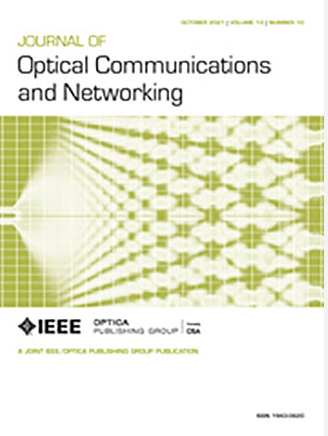Confidentiality-preserving real-time localization of soft failures in optical networks based on PCA and MLaaS
IF 4.3
2区 计算机科学
Q1 COMPUTER SCIENCE, HARDWARE & ARCHITECTURE
引用次数: 0
Abstract
Proactive management of soft failures is crucial for enhancing the reliability of optical networks. However, developing solutions that are simultaneously accurate, operate in real time, ensure data confidentiality, and scale effectively represents a significant challenge. This paper proposes a method for soft failure localization that ensures data confidentiality. The approach is devised for a scenario where the data owner (e.g., the network provider) elaborates its confidential data (e.g., telemetry data) through machine learning services provided by a third party (i.e., machine learning as a service). Data confidentiality and, as an important by-product, reduced data exchange are achieved by using principal component analysis-based data dimension reduction before transmission. The data are then sent to a third party, where they are processed using a semi-supervised K-means clustering algorithm. The resulting cluster labels are returned to the data owner, who performs label matching to localize potential failures. The method’s effectiveness is validated in terms of failure localization accuracy, achieving up to 98.5% on large-scale simulated datasets and 98% on small-scale experimental data.基于PCA和MLaaS的光网络软故障保密性实时定位
主动管理软故障对于提高光网络的可靠性至关重要。然而,开发同时准确、实时运行、确保数据保密性和有效扩展的解决方案是一项重大挑战。提出了一种保证数据保密性的软故障定位方法。该方法是为数据所有者(如网络提供商)通过第三方提供的机器学习服务(即机器学习即服务)详细阐述其机密数据(如遥测数据)的场景而设计的。通过在传输前使用基于主成分分析的数据降维,实现了数据的保密性和减少数据交换,这是一个重要的副产品。然后将数据发送给第三方,在那里使用半监督k均值聚类算法对数据进行处理。生成的集群标签返回给数据所有者,数据所有者执行标签匹配以定位潜在的故障。在大规模模拟数据集和小规模实验数据集上,故障定位精度分别达到98.5%和98%,验证了该方法的有效性。
本文章由计算机程序翻译,如有差异,请以英文原文为准。
求助全文
约1分钟内获得全文
求助全文
来源期刊
CiteScore
9.40
自引率
16.00%
发文量
104
审稿时长
4 months
期刊介绍:
The scope of the Journal includes advances in the state-of-the-art of optical networking science, technology, and engineering. Both theoretical contributions (including new techniques, concepts, analyses, and economic studies) and practical contributions (including optical networking experiments, prototypes, and new applications) are encouraged. Subareas of interest include the architecture and design of optical networks, optical network survivability and security, software-defined optical networking, elastic optical networks, data and control plane advances, network management related innovation, and optical access networks. Enabling technologies and their applications are suitable topics only if the results are shown to directly impact optical networking beyond simple point-to-point networks.

 求助内容:
求助内容: 应助结果提醒方式:
应助结果提醒方式:


